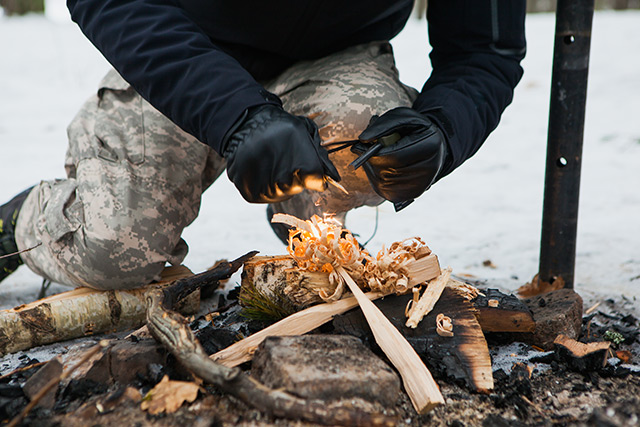How to properly set your goals for one year of total preparedness
08/02/2018 / By Edsel Cook

The best way to prepare yourself for anything – be it a normal excursion or bugging out when SHTF – is to plan far ahead. Goals are a clear indicator of what you need to accomplish. An article on the Prepper Website showed the best way to set your goals for achieving a full year of preparedness.
First, make sure to set realistic goals for yourself. You need to consider what is within your power to accomplish. That means starting small.
Spend an entire year on amassing enough supplies that will last you for three months. Select one type of material to focus on: Food, water, funds, medicine.
You can also consider picking up a new skill during every month of that year. Again, keep this goal realistic. Instead of aiming for large and complex skills like bushcrafting, pick up a smaller and simpler yet useful skill, such as cooking or sewing.
Even if you can afford to amass those supplies or pick up complex skills within a short amount of time, you must not become complacent. A large stockpile does not equate to perfect preparedness.
You will need to keep growing that stockpile and expanding its contents to include other important items. Prepping never ends.
More likely, you probably do not have a large amount of funds or time to splurge in the first place. Picking a goal will help you focus your efforts. (Related: Prepping to barter when SHTF: What skills to learn and items to stockpile.)
Write down your year-end prepping goals
Once you have set your goals for preparedness, you will need a plan to turn those goals into reality. Put that plan into writing. Start with your objectives so you have a visible reminder of what you are aiming for.
Think of specific actions you can take to achieve your goals. For example, record that you will add one week worth of supplies or a new skill every month. If you do this for 12 months straight, you will achieve your goal of creating a three-month stash at the end of the year.
Also write down the specific amount of supplies or the type of skill you want to get; the exact amount of money you can afford to spend on it; and the means by which you will get it. For example, you decide to spend $50 every month on books or a membership in a preparenedness video site.
Make sure you can hand the written plan to someone else in case you become unable to fulfill it, like if you fall sick. The plan should be simple enough for anyone to follow. Get feedback from your substitute about the plan. Maybe you can even persuade them to also take up prepping.
Be accountable to yourself or to a fellow prepper
The last step is to ensure you are accountable to someone who will keep you going. You need someone to go over your ideas and share in your plan.
Most preppers hold themselves accountable. It is likely that this holds true for you. So set a time every week to review your plan and make sure you are doing what needs to be done.
If you can find another prepper, you can coordinate with him or her. Find out if your partner has accomplished his/her goals for the month. If yes, give him/her a pat on the back; if not, encourage him/her to do so.
In sum, set prepping goals for yourself; make a plan and stick with it; and make sure to be accountable to yourself and to a partner. This lets you avoid disorganized prepping.
Pick up more handy tips on prepping at Preparedeness.news.
Sources include:
Tagged Under: bug out, off grid, planning, preparedness, Preppers, prepping, prepping goals, setting goals, SHTF, survival, survivalist



















